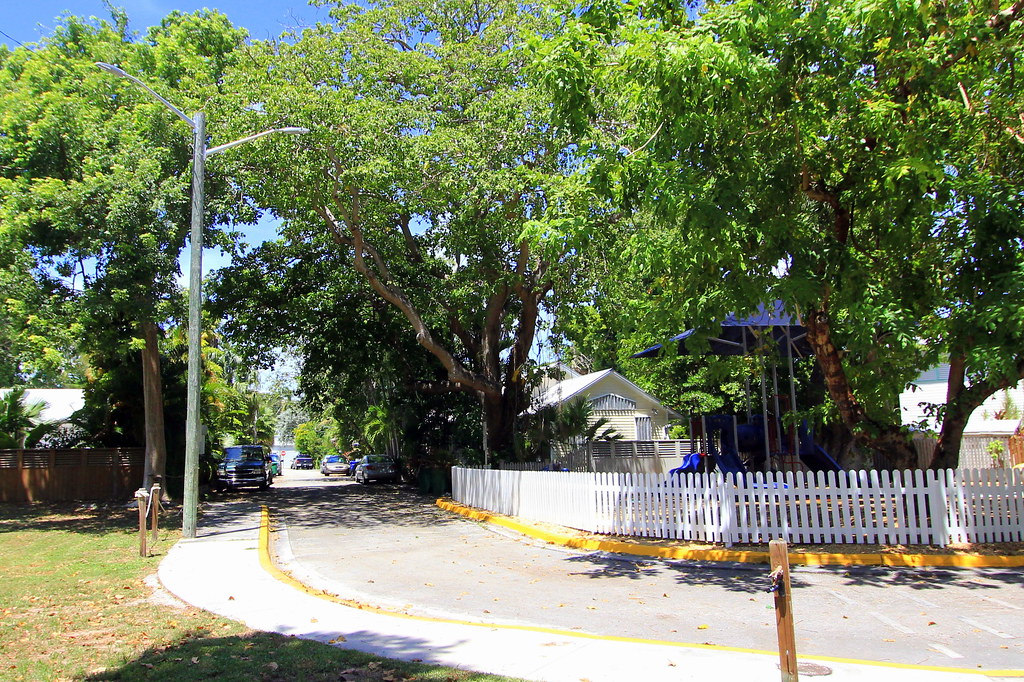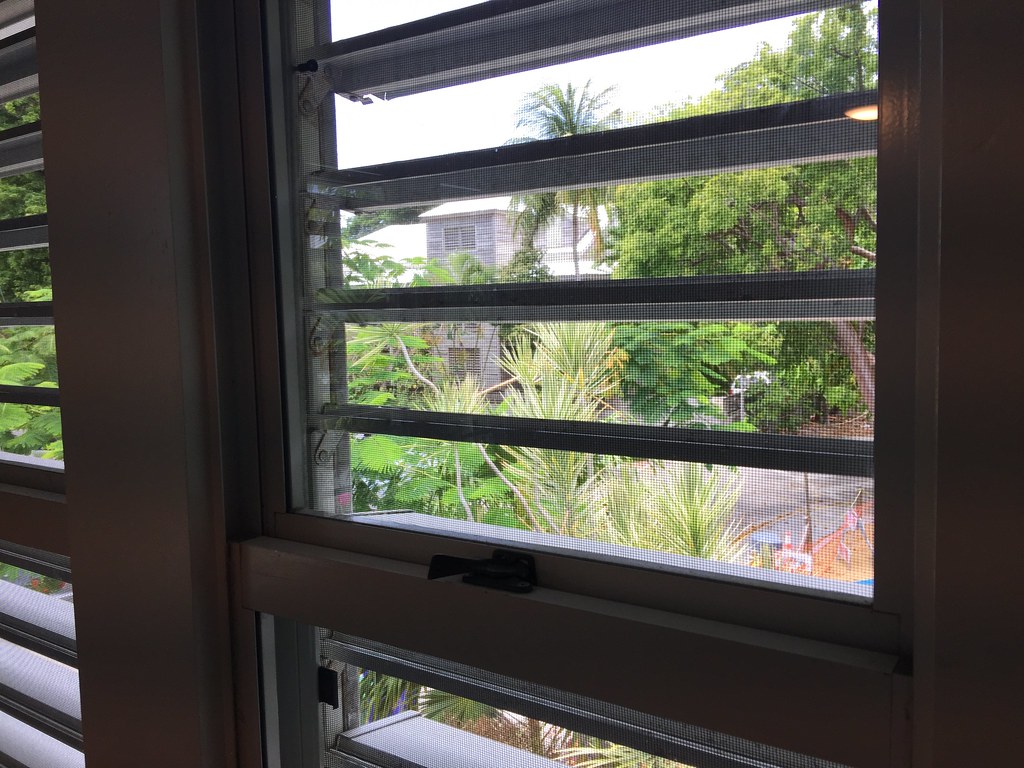I have made numerous references in my blog to Bill Butler Park when discussing homes on Upper William Street, Galveston Lane, and Poorhouse Lane. This "Pocket Park" is named after
Bill Butler, a musician who led funeral procession band to the Key West Cemetery. I did not see him play, but I have always stopped when such a band passes. It brings tears to your eyes and a hope that one day someone might care enough to commemorate one's passing.
"When the
hearse carrying William “Bill” Butler’s casket broke down on the way to
Key West Cemetery in August 1984, his nephews put his casket on their
shoulders and carried him the rest of the way. The irony was lost on no
one."
 |
| Bill Butler Park circa 2010 |
In his book
The Streets of Key West: A History Through Street Names author
J. Willis Burke informs us that "Over the other side of Solares Hill a
couple of entries are self-explanatory. Galveston Lane is named for the
Texas gulf coastal city that was served by the Mallory Steamship
Company, and off Windsor, on Poorhouse Lane, a poorhouse was once tucked
away."
Two years ago I started photographing two houses on Poorhouse Lane which were being renovated. I noticed the city had started to upgrade Bill Butler Park. The construction on both houses passed at a snail's pace as is to be expected on this island of endless tomorrows. In July 2020 I attended an open house at 725 Poorhouse Lane. I looked out the second floor widow and took in the view of the yet to be over-gentrified area surrounding Bill Butler Park. The park was still under construction. The view was remarkable. This could be cool, I thought.
I went back the park the past weekend. I think the renovation is now complete. Upper William Street has some notable locals. But then there are notable people people on just about every street in Old Town. Butler was notable for what he gave the community, not his fame or fortune.
 |
| Upper William Street |
 |
| Galveston Lane |
 |
| 725 Poorhouse Lane |
Most of the original homes and cottages in this area were owned or at least occupied by black families. The homes were usually sold by surviving heirs as the grand parents, aunts or uncles passed. Most of those homes have been renovated and are now quite valuable. Photographers from the WPA took photos of the area during the Depression while artists created depictions of life in this area - a few examples follow. I originally viewed the photos and images as quaint portrayals of black lives in Key West during the Depression. Given what has happened in the past couple of years I see these images more like minstrel shows - portals through which White Americans could view Black Culture with images of barefoot children and simpletons.




While preparing to write this blog I searched the Historic Sanborn Fire Maps and found something I had never seen before. Locals and returning visitors to Key West know that houses on three sides of the cemetery were taken down or relocated to make more space for the dead. Among the houses taken down were cottages on
Darkey Lane - noted on the map by a check mark. It is my understanding that the mappers sometimes gave arbitrary names to certain lanes which were not identified by the city. I can only guess the mappers were referencing the color of the skin of the people who lived there. Maybe we chalk this up to not knowing any better .Or maybe it is just another example of corporate racism.
I have never, ever, seen a child play at the original or newly updated Bill Butler Park. Old Town has few children.





















